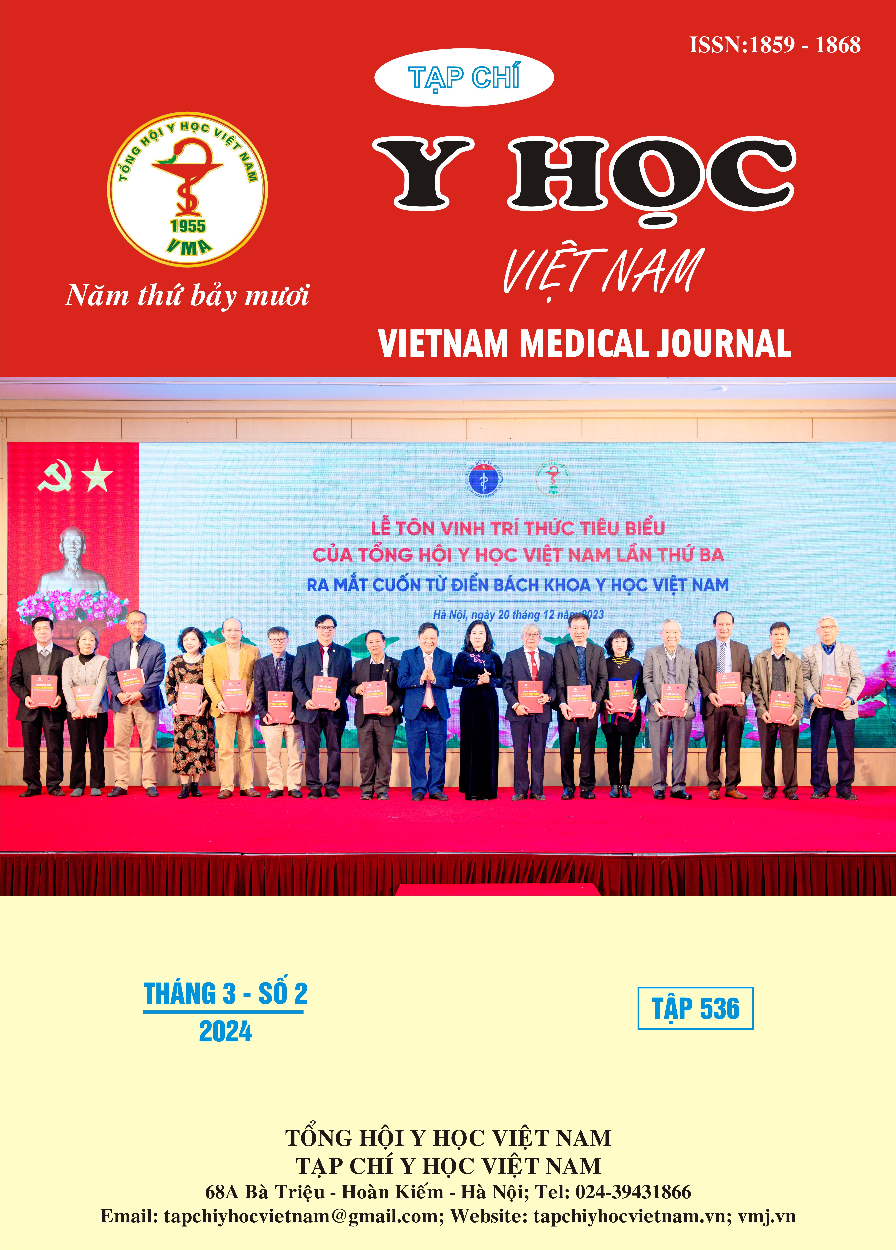RESULTS OF TREATMENT FOR OVARIAN CANCER OF THE GRANULOSA CELL TYPE AT K HOSPITAL
Main Article Content
Abstract
Objective: Describe some clinical and paraclinical characteristics and evaluate the results of treatment of patients with granulosa cell ovarian cancer at K hospital. Research subjects and methods: Retrospective and prospective descriptive study on 44 ovarian tumor patients who were operated on and histopathologically tested at K hospital. Postoperative diagnosis was ovarian granulosa cell tumor eggs from 2014 -2022. Results: The average age was 51.7 ± 13.3 years old, the most common histopathological type was adult granulosa cell tumor (97.2%). The tumor size of granulosa cell tumor is 11.23±5.65cm (from 3.5cm to 25cm). Stage I granulosa cell tumor patients predominate with 50%, stage II accounts for 20.5%, and stage III accounts for 29.5%. Average follow-up time was 47.8 ± 24.7 months (range 10.8-94.4 months), overall survival (OS) and disease-free survival (DFS) rates were 5 years in the patient group. granulosa cell tumors were 90.9% and 79.4%, respectively. Stage I has a greater 5-year DFS than stages II-III (100% vs. 54.1%), the difference is statistically significant with p < 0.001, no residual lesions after surgery have a DFS of 5 More years had residual damage after surgery (94.7% compared to 0%), the difference was statistically significant with p < 0.001. Other factors such as age and tumor size did not have a statistically significant difference with p of 0.091 and 0.706, respectively (p > 0.05). Conclusion: Granulosa cell tumor is a rare type of ovarian cancer with a wide age distribution, with the majority occurring in the early stages and with a good prognosis. Disease stage and remaining lesions after surgery are important prognostic factors for granulosa cell tumors.
Article Details
References
2. Bryk S, Pukkala E, Martinsen JI, et al. Incidence and occupational variation of ovarian granulosa cell tumours in Finland, Iceland, Norway and Sweden during 1953-2012: a longitudinal cohort study. BJOG Int J Obstet Gynaecol. 2017;124(1): 143-149. doi:10.1111/ 1471-0528.13949
3. Chi, Dennis S.; Berchuck, Andrew; Dizon, Don S.; Yashar, Catheryn M. Principles and Practice of Gynecologic Oncology. 7th ed. Lippincott Williams & Wilkins; 2017.
4. Khosla D, Dimri K, Pandey AK, Mahajan R, Trehan R. Ovarian granulosa cell tumor: clinical features, treatment, outcome, and prognostic factors. North Am J Med Sci. 2014;6(3):133-138. doi:10.4103/1947-2714.128475
5. Armstrong DK, Alvarez RD, Bakkum-Gamez JN, et al. Ovarian Cancer, Version 2.2020, NCCN Clinical Practice Guidelines in Oncology. J Natl Compr Canc Netw. 2021;19(2): 191-226. doi:10. 6004/jnccn.2021.0007
6. Ayhan A, Salman MC, Velipasaoglu M, Sakinci M, Yuce K. Prognostic factors in adult granulosa cell tumors of the ovary: a retrospective analysis of 80 cases. J Gynecol Oncol. 2009;20(3): 158-163. doi:10.3802/jgo.2009. 20.3.158
7. Zhang M, Cheung MK, Shin JY, et al. Prognostic factors responsible for survival in sex cord stromal tumors of the ovary--an analysis of 376 women. Gynecol Oncol. 2007;104(2):396-400. doi:10.1016/j.ygyno.2006.08.032


